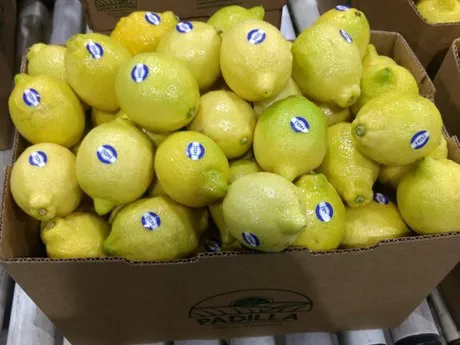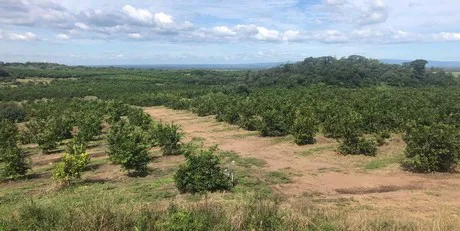The 2019 summer U.S. lemon market looks significantly different from the 2018 scene.
“This year, California had a very big crop,” says Luis Elortondo of Salix Fruits LLC., a U.S. fruit importer/exporter specializing in citrus and based in Atlanta, Ga. This is unlike 2018 when the region saw low production thanks to weather-related events. Elortondo notes that currently California is harvesting in District 2, the coastal district. “And production from District 1 has overlapped with District 2 which has resulted in a big offer to the market,” he says. “Particularly with bigger sizes. Throughout the season, the rains have resulted in not only a big crop, but big sizes.”
However District 2 began its production as per usual and will run until mid-June. “That’s when they’ll reduce production heavily but they’ll still continue to have some supplies,” says Elortondo.

Argentina’s role
At the same time, Argentina has begun shipping lemons into the market. The country is only in its second year of shipping lemons into the U.S. market. “Last year, Argentina didn’t ship many containers to the U.S. because it was the first year they were allowed to enter the U.S. and they wanted to be very cautious,” says Elortondo. “This will change completely this year and shipments to the U.S. will increase by 300 percent, if not more.”
Argentina is expected to ship between 20,000-30,000 tonnes into the U.S. market depending on the weather. “It has rained a lot in the main Argentinean district, Tucuman and they are harvesting late and the quality isn’t as good,” says Elortondo. “However in the second district, Salta, the quality is really good because it hasn’t rained as much.”

Threshold on demand
While demand for lemons looks as per usual, a bump in supplies significantly affects the market. “Overall there is approximately 10-20 percent more volume in lemons. That’s a lot,” says Elortondo. “Unlike other fruits, lemons has a very inelastic demand. If you reduce the prices, you’re not going to be able to promote and get a higher consumption. Instead, 10 percent more supplies results in lower prices.”
And that’s how pricing has developed over the season—they’ve been low and will continue to be low, which Elortondo says is abnormal for this time of year. “The market is picking up, particularly on smaller sizes, so 140s, 165s and 200s,” he says. “But prices for the larger sizes, 95s and bigger, are still low. In the next two weeks, prices will remain in the $20-$25 for big sizes and for smaller sizes, $35-$40. We’re going to have a tough market for big sizes in the next two to three weeks.”
Imports will also continue to arrive into the U.S. from new countries of origin as the summer goes on —from Mexico in July through to September and Chile, which begins arriving in June and goes until the end of July.
For more information:
Luis Elortondo
Salix Fruits LLC
Tel: +1 (770) 872-7824
luis@salixfruits.com
http://salixfruits.com/
